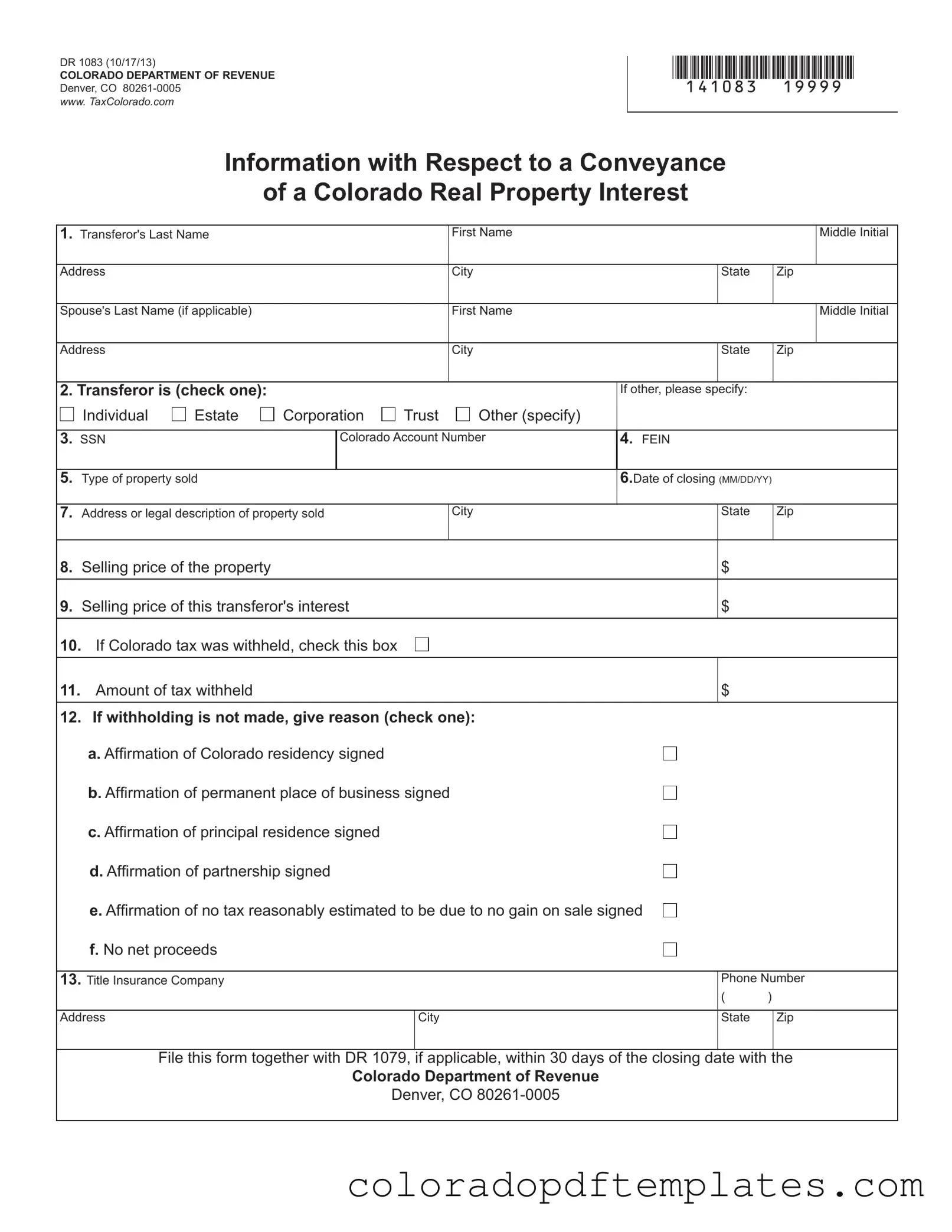The DR 1083 form is utilized to report the conveyance of a real property interest in Colorado. It is specifically designed for situations where Colorado tax may be withheld from the proceeds of a property sale. This form must be filed with the Colorado Department of Revenue within 30 days of the closing date if tax was withheld or if it would have been withheld but for certain affirmations made by the transferor.
Any transferor involved in the sale of Colorado real property valued at $100,000 or more may need to complete the DR 1083 form. This includes individuals, estates, corporations, and trusts. If there are multiple transferors, each must submit a separate form unless they are married and choose to be treated as a single transferor.
The form requires various details, including:
-
The names and addresses of the transferor and, if applicable, the spouse.
-
The type of entity transferring the property (individual, corporation, etc.).
-
Social Security Number or Colorado Account Number.
-
The type of property sold and its legal description.
-
The selling price of the property and the transferor's interest.
-
Details about any tax withheld.
-
Information about the title insurance company involved in the transaction.
What are the withholding tax requirements?
Generally, sales of Colorado real property valued at $100,000 or more by non-residents are subject to withholding tax. The withholding is typically 2% of the selling price or the net proceeds, whichever is less. However, there are exceptions where withholding is not required, such as when the transferor has a Colorado address or if the selling price is below the threshold.
What happens if tax is withheld?
If Colorado tax is withheld, the title insurance company or closing agent must complete the DR 1079 form to transmit the withheld tax to the Colorado Department of Revenue along with the DR 1083. This process must occur within 30 days of the closing date to avoid penalties.
What if tax is not withheld?
If tax is not withheld, the transferor must provide a reason by checking the appropriate box on the form. Possible reasons include affirmations of residency, a permanent place of business, or that no tax is reasonably estimated to be due. Each affirmation must be signed under penalty of perjury.
If the title insurance company or closing agent fails to file the DR 1083 form when required, they may face penalties. The penalty can be either $500 or 10% of the amount that should have been withheld, with a maximum penalty of $2,500. Timely filing is essential to avoid these financial consequences.
Additional information and resources regarding the DR 1083 form can be found on the Colorado Department of Revenue's website at www.taxcolorado.com. For specific inquiries, individuals can also contact the department at (303) 238-SERV (7378).
